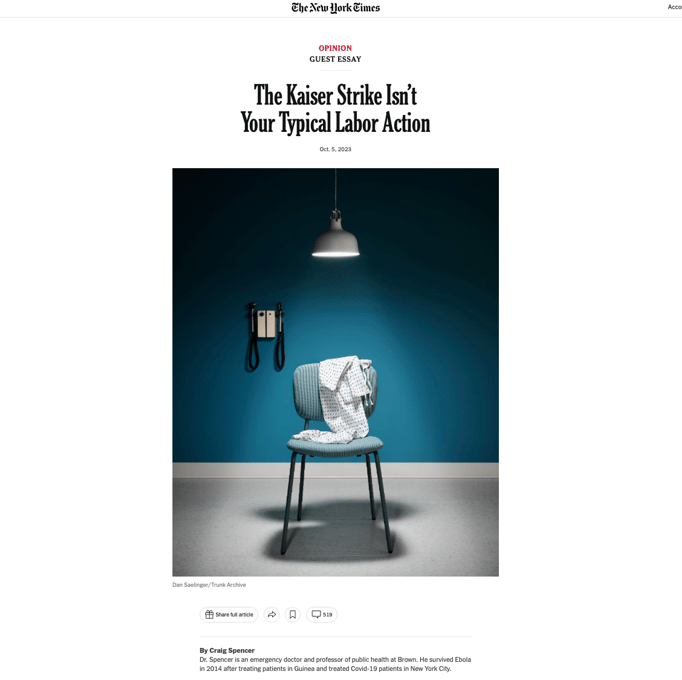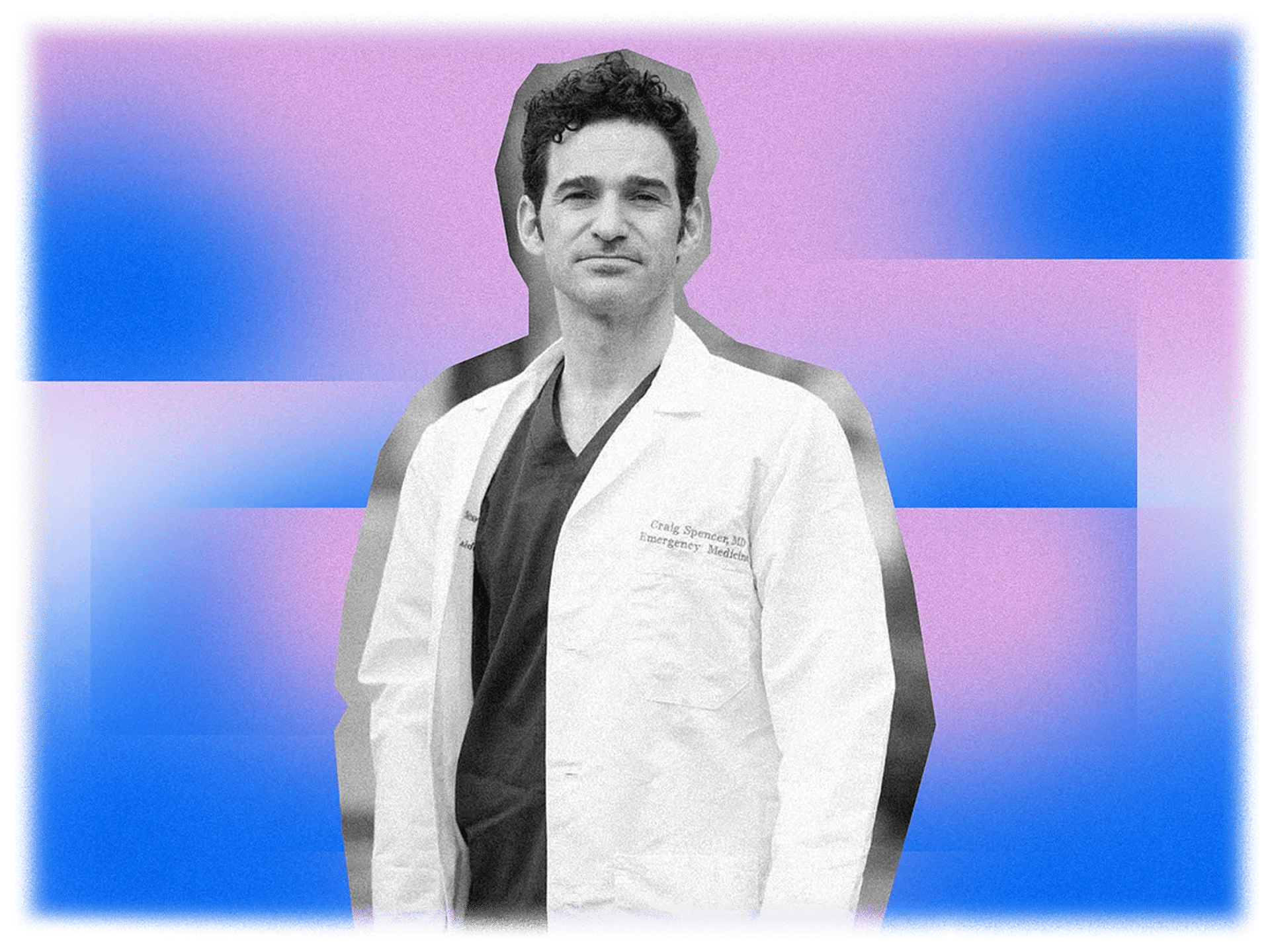New York Times—The Kaiser Strike Isn’t Your Typical Labor Action
In this opinion piece for The New York Times, I reflect on the massive Kaiser Permanente health care strike, the largest of its kind in U.S. history, and its deeper causes beyond pay disputes. Drawing from my own frontline experiences during the COVID-19 pandemic, I highlight systemic issues—provider burnout, unsafe working conditions, bureaucratic hurdles, and severe staffing shortages—that persistently undermine the health care system. To address these chronic problems, I advocate for federal initiatives including mental health support for health care workers, stronger staffing standards, and increased efforts to diversify and expand the health care workforce.
10/5/20231 min read


In April 2020, when I would walk home after a long day treating patients in a New York City emergency room, an orchestra of pots and pans would erupt from seemingly every window to honor frontline workers. Nothing could make those early pandemic days easier for me and my colleagues, but those haphazard symphonies of appreciation helped keep us going. At that time, health care workers had every reason to hope that once the Covid-19 pandemic waned, long-overdue and much needed changes to our health care system would finally materialize.
But after Covid vaccines rolled out and the country largely moved on from the pandemic, those promises were seemingly forgotten. We drifted back to our old normal in which health care workers felt unsafe, unappreciated and unsupported.
This helps explain why more than 75,000 workers at the Kaiser Permanente health care system have walked off the job, in what union leaders say could be the largest health care strike in U.S. history. Similar to Hollywood writers and actors and the United Automobile Workers, the striking Kaiser workers are demanding better pay and benefits. But many of their greatest demands can’t be met with money alone. The changes they want require a major overhaul of how health care is delivered.
